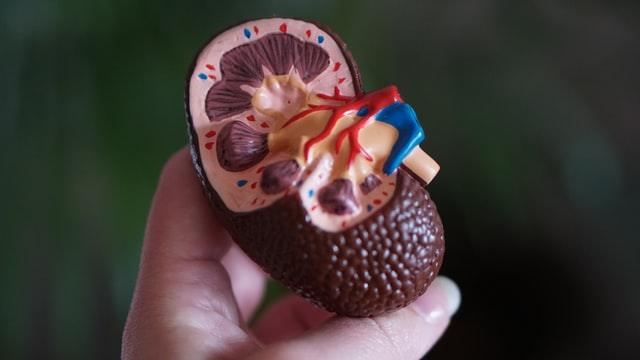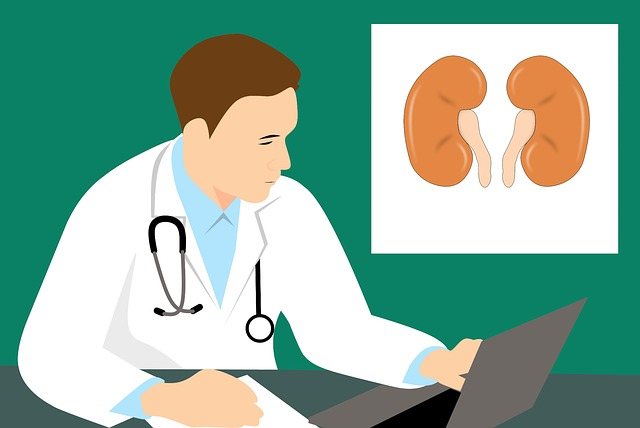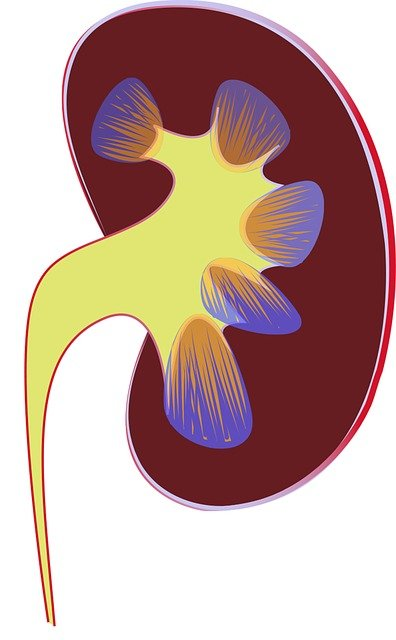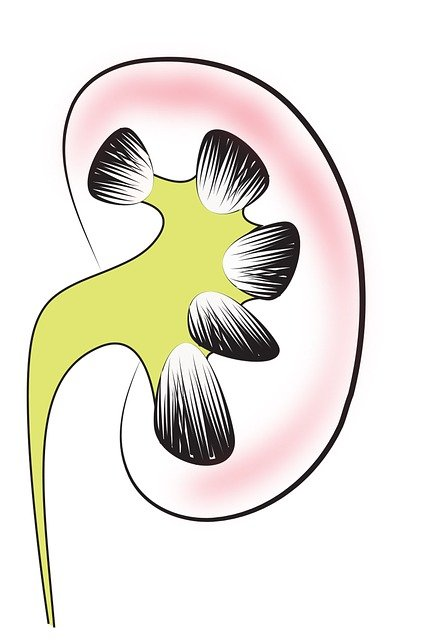What is the function of the kidney?


Understand if your kidneys are functioning properly
Have you ever visited city slums? You might notice heaps of garbage. Don’t be offended, it is the waste produced by the citizens. The people clean their houses and the town administration gathers the excrement at a place for safe removal. Your body is also like a city. It has multiple organs working in it and these organs also produce waste products. So, where is your body administration?
Your body administration is hidden in your kidneys. These small organs remove the waste products from your body in urine. So, the health of the kidneys is crucial to the health of the whole body.

You might questions, I’ve never noticed any heap of garbage besides my body. Your body excretes the waste in a dissolved form in the urine. So, how would you realise that your body’s municipal administration is working properly? A chemical called creatinine could serve its purpose.
Your muscles have a compound in them called creatine. The natural breakdown of this creatine produces creatinine. This creatinine enters the blood and is excreted by the kidneys. So, a normal amount of this substance is always present in your urine regardless of your diet.
The doctors use the level of this creatinine to establish that your kidney is properly working. A decreased level shows that your kidneys are not working properly while an increased level would show that your muscles are broken down at a faster pace than usual.
One thing important about the level of creatinine is that its level is not the same for all people. So, the doctors usually talk about a normal range. It also depends on your occupation, living standard, nutritional status, gender and age.
The physician will have to consider these factors while interpreting the results. So, the level of creatinine is not the best way to judge the function of kidneys, it is merely a simple and crude way to guess. Physicians use another term called glomerular filtration rate (GFR) for a more comprehensive understanding of kidney functions.
This GFR takes into account your age, body weight, gender, race etc...
While measuring any bodily parameter, you must understand that it could be measured either from blood (serum) or from urine. As the creatinine produced by your body will appear in your blood, the term called ‘serum creatinine is used to describe the total creatinine produced by the body. The serum creatinine levels are 0.7-1.3 mg/dL for men and 0.6-1.1mg/dL for women.
The kidney filters this creatinine and it also appears in your urine. Another term ‘creatinine clearance’ is used by physicians for this creatinine appearing in your blood. The creatinine clearance means how much creatinine is cleared out by your kidneys within a given time. It is usually measured in millilitres per minute (ml/min) or millilitres per second (ml/sec). The normal values (reference values) of creatinine clearance given by the physicians are 1.8-2.50 ml/s (110-150 ml/min) for males and 1.66-2.16 ml/s (100-130 ml/min) for females. Again, the values are slightly higher for males. Creatinine clearance is a good estimate of the GFR.
Keep in mind that these values are used for reference only and the physician will explain these values by keeping in mind your age, gender, occupation etc...

Although your creatinine level provides a hint about your renal health, physicians usually don’t rely on creatinine alone. They take only a hint from it and may suggest to you some more sensitive tests which measure other proteins in your urine. These tests include.,

A one-time higher value may not be so important. Just repeat the test from some other laboratory or your physician will ask you to undergo a complete urine analysis (urinalysis). However, if your creatinine levels remain permanently higher and you are also feeling the symptoms of kidney problems (pain in the lower abdomen, changes in colour, odour or consistency of urine etc...), leave the further work to your physician. However, some precautions may help you.,
So, monitoring creatinine levels could be a useful part of your health monitoring program. Its extra values for a prolonged time are not a good sign for your body. Your kidneys have to remove it from your body. Therefore, its permanent high levels could lead to kidney overload and kidney failure.
All vertebrate vertebrates have kidneys. They help reduce excess waste in our bodies, maintain balanced electrolytes and control blood pressure. The kidney is the biggest organ in the human body. Ancient Egyptians left only the brain and kidneys positioned before they embalmed bodies, indicating they were more important than other organs. We examine kidney function in detail, disease effects, and how it can be maintained healthy. Placement The Trusted Source of the kidneys is under the chest ribs and has two in the spine.
The kidney is a reddish-brown bean-shaped organ of vertebrates. In adults, they are approximately 12 centimetres in width (4 + 1 - 2 inches) in length. [1] The blood enters the renal veins through two pairs. The kidneys of the patient are connected through ureters which are tubes that pass urine through urination. The kidney is responsible for controlling the volume of various bodily fluids - fluid osmolality - acids -bases balance - varied electrolytes concentration - as well as reducing toxic substances.
The kidney is two beanlike structures in the kidneys. They are helpful for the human brain passing urine into the bloodstream. A blood filter is also useful in preventing the flow to the heart. Nephrons are the major organs of any kidney. It is used by people in the intestine to process and metabolise nutrients and is used for the filtration process of blood. The kidneys contain approximately one million nephrons. Each individual structure possesses different characteristics.
In their urine, the renal cells produce various waste produced in metabolic processes. The nephron is a microscopically constructed structure of the kidney. It filters the blood from the source, reabsorbs its secretions, excretes and produces urine as a result of these actions. This includes nitrogen waste urea a product of the protein catabolic process and uric acid a product of nucleic acid metabolism. The ability of mammals to convert waste into urine in a volume much less than that of blood-containing wastes is dependent on complex countercurrent multiplicity mechanisms.
Reabsorption occurs when the ultrafiltrate is pushed out to the peritubular capillary. The cellular response occurs via selectively located cells at membranes. Water is 5% absorbed by the proximate tube. At normal plasma levels, glucose can easily be absorbed by the proximal tubule. The mechanism of action here is N + /glucose cotransport. Approximately 350mg dL will saturate the transient and sugar will lose its concentration within the blood. It is enough to get glucose into the blood to be able to diagnose diabetes symptoms in patients without undergoing surgery. Amino acid is reabsorbed into the proximal tube by the sodium receptive transporters.
Though the kidney doesn't sense directly blood pressure it is important for the kidney to regulate blood pressure. This occurs primarily by maintaining the extra cell compartment, which varies with plasma sodium content. Renin is the first in the sequence renine-angiotensin messenger systems. Changes to renin ultimately affect a system's function. Both hormones work via various mechanisms, but both enhance kidneys absorbing sodium chloride resulting in expanding the extracellular fluid and increasing blood pressure.
Different calculations are used for the measurement of kidney functions. Renal clearance is the volume of plasma that is removed from plasma in a single time. This fraction represents plasma that filters the kidney into the bloodstream. This is determined using a formula. The renal system is an extremely complex organ. Mathematics has been used for understanding the kidneys' function on various levels, including fluid intake and secretion. [23]
Two organ systems: kidney and lung maintain acid-base homeostasis, which maintains pH at an extremely stable value. The respiratory system contributes to acid-based homeostasis by controlling CO2-level concentrations. The kidneys play a vital part to keep the equilibrium between acid and base by returning dissolved bicarbonates from the bloodstream or excreting anionic hydrogen ions into the urine.
It helps keep water levels steady throughout the body. All osmolalities are detected in the hypothalamus directly connected to the posterior pituitary gland. A higher osmolality occurs when the glands produce an anti-diuretic hormone (ADH), allowing the kidney to increase the concentration. The two components work together bringing plasma osmolality to a normal level.
The kidney produces many types of hormones, namely erythropoeticin, calcitriol and renin. Erythropoiesin is released in response to hypoxia in the kidneys. It promotes erythropoiesis in the bone marrow. Calcitriol, the activated form of vitamin D, promotes intestinal absorption of phosphatase. Renin is a protein regulating angiotensin and aldosterone levels.
The last steps of processing of Ultrafiltration are excretion: the ultrafiltrate passes through the kidney and passes over an aqueous tube called the collect duct, a part of this system of collected ducts, and finally to an aqueous chamber. The collection pipe plays an additional part in the resorption and transportation of the Ultrafiltrate.
Filtration occurs in the kidney's corpuscle, and the process of retaining cellular cells and proteins during filtration is the same as that for materials that have a smaller molecular weight. The intestine produces 180 litres per day. The process can be called hydrostatic filtration due to hydrostatic pressures exerted on the capillaries' walls.
Secretion is an atypical reverse of the resorption: molecules move out of the peritubular artery by interstitial fluid, and then through the revascular tubular cells, and into the ultra-filtrated arteries.
Most people understand the kidney functions to remove waste from the body. This waste is removed through the urine. Using water, a urine emulsifier can be used to create urine that binds the emulsion and absorbs water. The process is needed for maintaining an accurate balance of body chemicals. In the liver, the vital control of the acidic salt content is performed through the kidneys. In addition, kidneys produce hormones affecting other organ systems. A blood-thinning enzyme is used to increase blood flow.
On both sides of the spine, there is a kidney which has the diameter of the rib cage below its base. Each kidney is composed of a million working cells known as the nephron. Nephrons consist of a filter of tiny veins called glomerular cells attached to a tubule. The blood passes through the glomerulus and the remaining blood passes through the tubule. The tubule is filled with chemicals and water depending on body requirements, and the final product is the urine we re-excite in it.

Humans normally have one kidney because the kidney is functioning better than necessary for survival. It is only when renal tissues are severely damaged that people develop chronic kidney diseases. renal replacement therapy may be used if renal dysfunction has resulted in low glomerular filtration rates and severe renal failure. 26.
Our Kidney Blood Test allows you to assess your kidney functioning from the comfort of your home. For a full range of blood tests and medications, visit our Welzo Online Pharmacy Page.










Plus get the inside scoop on our latest content and updates in our monthly newsletter.